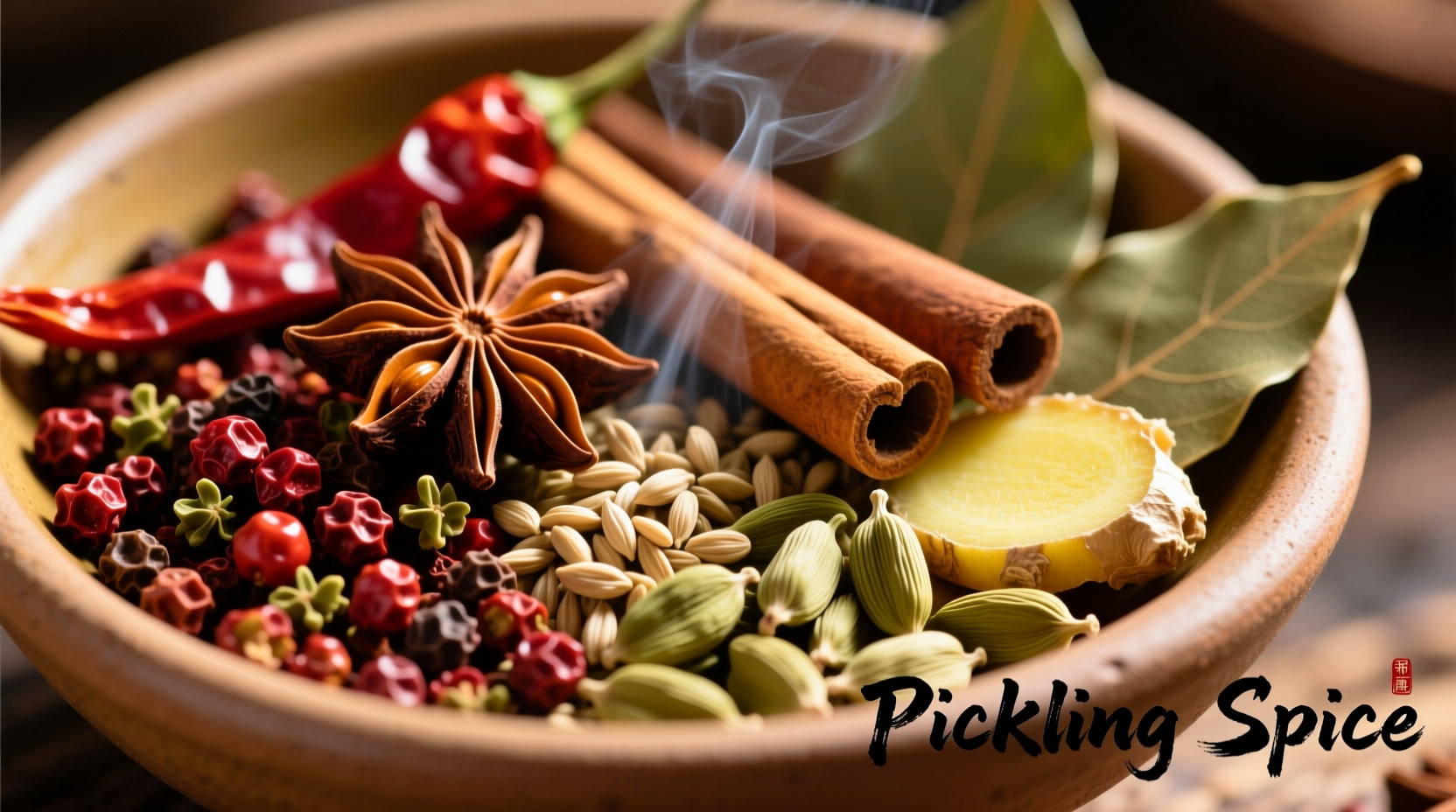Ever wondered what is in pickling spice that gives your homemade pickles that perfect balance of warmth and tang? Understanding the components of this essential kitchen staple transforms your preserving game from guesswork to precision. Whether you're a beginner preserving your first cucumber harvest or an experienced canner refining your craft, knowing exactly what goes into pickling spice—and why—helps you create consistently delicious results.
The Essential Components of Pickling Spice
While recipes vary by region and personal preference, most pickling spice mix formulas share these foundational ingredients that work synergistically to enhance flavor and preservation:
- Mustard seeds (yellow or brown) - Provide tanginess and help maintain crispness
- Coriander seeds - Add citrusy notes and antimicrobial properties
- Black peppercorns - Contribute heat and complexity
- Allspice berries - Offer warm, clove-like flavor with hints of nutmeg
- Bay leaves - Impart subtle herbal notes without overpowering
- Cloves - Add intense warmth (used sparingly)
- Cinnamon sticks - Contribute sweetness and depth
| Standard Pickling Spice | Regional Variations | Specialty Blends |
|---|---|---|
| Mustard seeds | Dill seeds (Northern Europe) | Red pepper flakes (spicy) |
| Coriander seeds | Juniper berries (Germany) | Ginger (Asian-inspired) |
| Black peppercorns | Fennel seeds (Mediterranean) | Cardamom (sweet pickles) |
| Allspice berries | Star anise (Scandinavia) | Nutmeg (fruit preserves) |
How Pickling Spice Has Evolved Through Time
The art of pickling dates back thousands of years, with spice blends evolving alongside preservation techniques. Historical records from the National Center for Home Food Preservation show how pickling spice formulations have adapted:
- Ancient times: Basic salt and vinegar preservation with locally available herbs
- Medieval era: Introduction of trade spices like mustard and cinnamon through Silk Road commerce
- 19th century: Standardized blends emerged as home canning became widespread
- Modern day: Regional variations reflect cultural preferences while maintaining core preservation principles

Creating Your Perfect Homemade Pickling Spice
Knowing what is in pickling spice empowers you to craft custom blends tailored to your taste preferences and specific preserving projects. Here's how professional chefs approach it:
Basic Homemade Pickling Spice Recipe
Combine these ingredients in a glass jar for a versatile blend (makes approximately 1 cup):
- 2 tablespoons mustard seeds
- 2 tablespoons coriander seeds
- 1½ tablespoons black peppercorns
- 1½ tablespoons allspice berries
- 8 bay leaves, crumbled
- 1½ tablespoons whole cloves
- 1 cinnamon stick, broken into pieces
When to Adjust Your Blend
Understanding essential pickling spice ingredients helps you make informed adjustments based on your preserving context:
- For crisp dill pickles: Increase mustard seeds and add 1 tablespoon dill seeds
- For sweet bread and butter pickles: Add 1 teaspoon celery seeds and reduce cloves by half
- For beet preservation: Include 1 star anise pod to complement earthy flavors
- For hot and spicy varieties: Add 1-2 dried red chilies per jar
Remember that whole spices maintain their potency longer than ground versions. Store your homemade pickling spice recipe in an airtight container away from light and heat for up to one year.
Expert Tips for Maximum Flavor Impact
Professional preservers know that how you use pickling spice matters as much as what's in it. Follow these evidence-based techniques:
- Toast spices lightly before using to release essential oils (30 seconds in dry skillet)
- Use cheesecloth bags for easy removal after processing
- Adjust quantities based on jar size - 1-2 teaspoons per pint jar is standard
- Avoid pre-ground spices which lose potency quickly and can cloud brine
- Don't skip the resting period - flavors fully develop after 2-4 weeks
According to food science research from the USDA Food Data Central, the antimicrobial properties of certain pickling spices actually enhance preservation safety when used in proper proportions. This scientific understanding separates effective pickling spice substitute ingredients from potentially risky improvisations.
Troubleshooting Common Pickling Issues
When your preserves don't turn out as expected, the spice blend might be the culprit. Here's how to diagnose and fix common problems:
- Overpowering heat: Reduce black peppercorns and cloves; increase mustard seeds
- Bland flavor: Ensure spices are fresh; consider lightly toasting before use
- Muddy appearance: Avoid ground spices; use whole spices in cheesecloth
- Insufficient preservation: Don't reduce vinegar content; ensure proper spice-to-brine ratio
Remember that regional water mineral content affects pickling results. If you have hard water, consider using distilled water in your brine for more consistent outcomes with your pickling spice blend.











 浙公网安备
33010002000092号
浙公网安备
33010002000092号 浙B2-20120091-4
浙B2-20120091-4